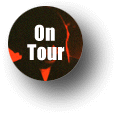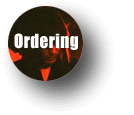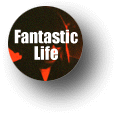

Charles Curtis-
Ultra White Violet Light Double LP/Double CD
|
The Wire February 2000 "Charles Curtis's sublime four part sine tone symphony is designed to be played at the same time on four separate record decks, or individually where the impact is less orchestrated but more defined. As well as vibrating the sinewaves, Curtis also employs sustained electric guitars, bass, drums, cellos and speech into his investion. The result is a work which resonates loudly with LaMonte Young's minimalist teachings for his Theatre Of Eternal Music (Curtis is a former member of Young's ensemble), but one that miraculously resists pale imitation in favour of fresh exploration."-Edwin Pouncey Opprobrium Online 12/01 "An entertaining head-scratcher from LaMonte Young cohort Curtis, consisting of four 20-min. pieces: two simple, hypnotic sine-wave-based drones, one equally-great drone marred slightly by a lethargic Curtis poem-reading, and, as the real puzzler, a pretty-OK slo-core rock track that, when accompanied by more slack Curtis word-shoveling, sounds exactly like Slint ca. Spiderland. Curtis' rambling liner notes (wherein the aesthetics of the sine wave and the reporting of what Michael Schumacher once ordered for dinner achieve equal stature) suggest that the tracks on the two CDs be played simultaneously in various combinations, and while they do sound pretty nice that way, so do most good records. None of the possible configurations ever makes the case that the music wouldn't sound better without Curtis' not-good/not-bad/who-cares verse pasted on top, but then nothing here is ever actually ruined by said somnambulist drooling, and the drone-only pieces ('A' and 'C' for those with a PDA handy) are so head-dividing they easily bleed into and smother over the minor rough spots in their weakling brothers 'B' & 'D'. 'A' in particular sounds like Henry Flynt thumb-wrestling Phill Niblock, in a burning, cycling swarm of cellos, oscillator, and guitar sustain that forces a plastic tube of fiery liquid down any attending ears. In fact Curtis could easily make the jump from top-rung drone-generator to cloud-riding sound-god if he could enlist Niblock's editing/layering abilities (the drones here if multiplied could move mountains ? which I guess proves Curtis' simultaneous-play point), but for now Ultra White Violet Light/Sleep is a fine enough river to send one's stiff corpse down". -Marc Masters [one final note] issue #6 spring 2001 "Curtis is a minimalist composer/guitar player, classically
trained as a cellist and apprentice to drone master La Monte Young,
who has come up with an interesting sonic adventure for listeners.
In the spirit of the old "Choose Your Own Adventure" books, this
release comes in the form of two discs, each with two tracks identical
in running time to their analogues on the opposite platter. The
idea is that these tracks can be enjoyed on their own, or can
be recombined using multiple stereo sets, boomboxes, amplifiers,
and so forth (the more cassette copies you can make, the more
possibilities for different versions you have). Dream Magazine #3 "The cover art is so fine: night photography of big spacious architectural/sculptural buildings and ramps. Classically trained Curtis has been closely associated with La Monte Young since 1986; Young considers him: "the foremost interpreter of my music in the world", he’s played with King Missile, Kathleen Battle, Herbie Hancock, Speculum Musicae and many others. The intention is that you intermix these sides, it’s easy to imagine how well it would work. No titles, side A is a simple accumulation of droning cello, guitar and sine tones. Side B features a narrative about a friend who has a dream/reality disorder with musical backing that brings to mind a more warmly organic and inspired Tortoise. Side C is spare sustained guitar hum and sine tones; the gradual feeling of shifting intensity. Planets and stars might sound like this to one another as they cycle through their gravitational dances as endless and vast as time. It also gets very hypnotic, at the halfway point you should be levitating about three feet above the floor. Side D combines all of the different elements that comprised the previous sides; including a narrative that is detailed, trippy and dreamily vivid spoken over a sorta of Indian droning atmosphere of interweaving cello and guitar hum, a bit like Piano Magic when Glen narrates one of them."-George Parsons High Bias Web Zine 5/6/01 "I'm into experimental art. Like this simultaneous double play CD from NYC composer/cellist Charles Curtis. The sleeve instructs the listener to use four playback devices (one for each track), even suggesting dumping to cassette, which is then wired into an amp, or parking four convertibles together for a unique listening experience. Tech-ing it up a notch, my method was to digitize all four tracks into ProTools and play them simultaneously, then to break out of my Catholic upbringing and really fuck some shit up! Track a contained cellos, sine tones, and sustained electric
guitars. When playing the tracks as directed (MotherMaryMix), the voice is muted, hypnotic, suggestive of supernatural elements, dwarves, the feeling of layers‹an elfin-sized perspective with looming redwoods swaying grandly above. Yellow-tinted orange butterfly wings flitting intermittently, leaving sonar circles in upscaling size with diminished transparency. Definitely dreamlike. The spoken words are announced, "Second Avenue, Thanksgiving" , bringing travel and smell to my surreal landscape. I'm like a floating anime character losing rubles from my pockets. Intersections of insects. Cornucopia. The repetition of "It is Thanksgiving" makes me loop, feel like there is something I'm trying to reinforce, a landmark, a special place, an owned segment of space. My friend Mike also visualized an elfin perspective, looking at skyscrapers with raindrops falling slowly on his face. One last noodling visual: the cello and guitar wrap themselves around the drone; long spidery fingers caressing through each other to try to capture underwater huge Venus flytraps swaying to lazily capture their prey. Albeit a less gritty approach than amped walkmans, my digital method incurred some artifacts which added unexpected rhythms and meaning to the work. My G4 was revving with this clicking, metronome-like march that my brain likened to a determined army of well-coordinated nymphs. The MotherMaryMix was difficult listening on account of it's sine-wave cleanliness. Mike and I then played "DJ" and foxed with all sorts of combinations, stutterances and levels of the tracks (Confessional Mixes). My personal favorite was using the mouse to pan track d left and right with the quickness of a Scratch Pickl, and opposing slow pans of alternating tracks, like a conductor stringing the sounds of Japanese hanging lanterns. These remixes provided the dirt and discrepancy our ears had longed to grab. Good for: analyzing, being depressed, tripping. For fans of: Air, Japancakes, spoken word."-Shelley Pellegrin
CHARLES CURTIS MAIN PAGE • DISCOGRAPHY |





